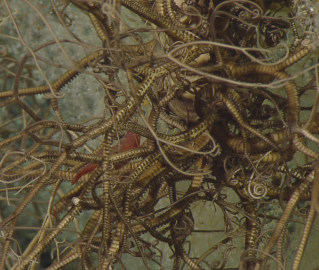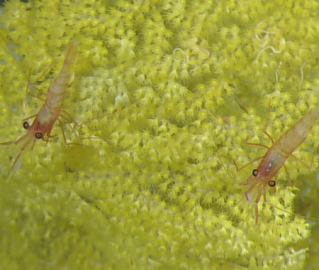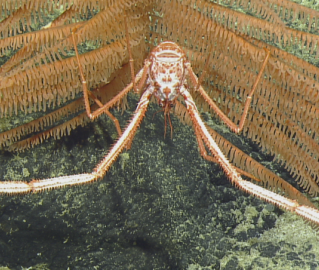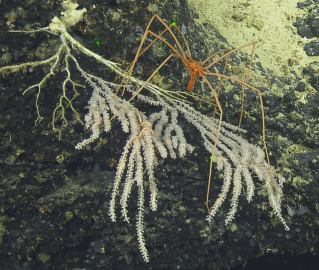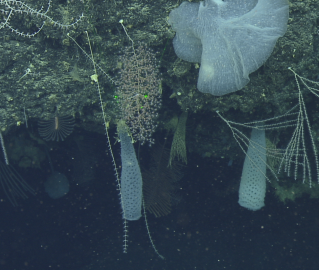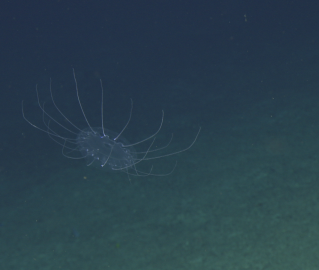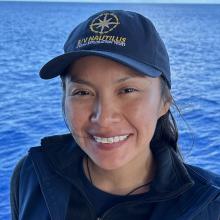
Kim Etsitty
Tell us about your work/ research. What kinds of things do you do?
Yá’át’ééh. Shí éí Kim Etsitty yinishyé. Tódích’íí’nii nishłį́ To’aheedliinii bashishchiin Kinyaanii dashicheii Naakai dine’é dashinalí. Ákót’éego diné asdzáán nishłį́. Chʼínílį́ déé’ naashá.
Hello, my name is Kim Etsitty. I am of The Bitter Water clan and born for The Water Flow Together Clan; my maternal grandfather is from The Towering House Clan, and my paternal grandfather is from the Mexican People Clan. In this way, I am a Navajo woman. I am from Chinle, Arizona.
I am an educator at Gallup McKinley County Schools at Navajo Pine High School (Navajo, New Mexico) and a curriculum writer with the Los Alamos National Laboratory (Espanola, New Mexico). I have been a teacher for over a decade; my students range from 2nd to 12th grade. The majority of the students that I serve are Diné (Navajo); students come from beautiful landforms at 7,000 ft elevation along red rocks and the Navajo volcanic field. The subjects I teach are Physics and Biology; my approach to Western science is using Indigenous knowledge in the classroom. I incorporate the cultural teachings and wisdom of our Navajo people to understand the fundamentals of science. I am part of a team with the Los Alamos National Laboratory; we are currently working on an Indigenous Science Curriculum for public usage. The curriculum focuses on land-based activities to deepen appreciation for Mother Earth.
What sparked your initial interest in your career?
As a kid, I grew up on a ranch and helped take care of the animals. I gravitated toward animal science but drifted away and began my college journey toward education. Throughout my college journey, science continued to interest me because I loved how my botany and geology professors invited local scientists to lead lab days. Six years ago, I transitioned from teaching primary grades to middle school and high school science. I love sharing my passion for space and nature through an Indigenous lens and teaching students how to be curious simply.
Who influenced you or encouraged you the most?
My science college professors played a significant role in influencing me to pursue science. Their passion and dedication to science in the Navajo Nation were unique and inspiring.
What element of your work/ study do you think is the most fascinating?
I have recently partnered with the NASA space grant program; this will be my second year. They help me bring telescopes to schools in the Navajo Nation and provide hands-on activities for my students. Some of the activities I have coordinated were Star Parties and Navajo Constellations Story Telling using the Star Laboratories. If there were one pivotable moment in my life, it would be seeing Saturn for the first time through a telescope. I hope that at least one of these students will experience that moment and pursue science.
How did you get involved with Ocean Exploration Trust? How did you become part of the expedition team?
In December 2023, I was accepted to attend an Educator's workshop at NASA's Jet Propulsion Laboratory in California. At the workshop, an engineer working on an undersea rover named BRUIE presented on exploring beneath icy ocean surfaces. The presentation intrigued me because I had never thought of it; I had never correlated studying icy surfaces with ocean worlds like Jupiter's moon Europa. The presentation continued to center on the importance of oceanic features, and I felt the urgency to know more. The biggest takeaway from that visit was that I qualified to be a part of the expedition team and how important it was to apply myself, not only for me but to serve as a role model to my students.
What other jobs led you to your current career?
Before I became a teacher, I served as a Peer Educator at a college; this was an intense math camp focusing on students who had trouble passing college mathematics. The camp was unique because it utilized the outdoors to understand mathematics. Another job that heavily influenced my career was teaching English to Korean students for the summer. We not only stayed in the classroom but focused on a lot of outdoor activities.
What are your degrees and certifications?
BA in Education, 2011, Diné College
MA in Education, 2013, University of New Mexico
MA in Educational Leadership, 2025, University of New Mexico
What are your hobbies?
I love the outdoors: riding my bike, running trails, star gazing, and spending time with my two daughters.
What advice would you give someone who wants to have a career like yours?
My advice to future educators would be to reflect on their education from their lives and think about the times they were best taught. Now, use that to drive your teaching style. It is easy to go by the curriculum provided by the state, but it is good to think critically if it best suits the community you serve.
What excites me more about exploring the deep sea is that much of it is unknown. I love space and would love to go to space, so studying the ocean is as close as possible to understanding other life forms in our universe.
Expeditions
Kim participated in the following Ocean Exploration Trust expeditions:
